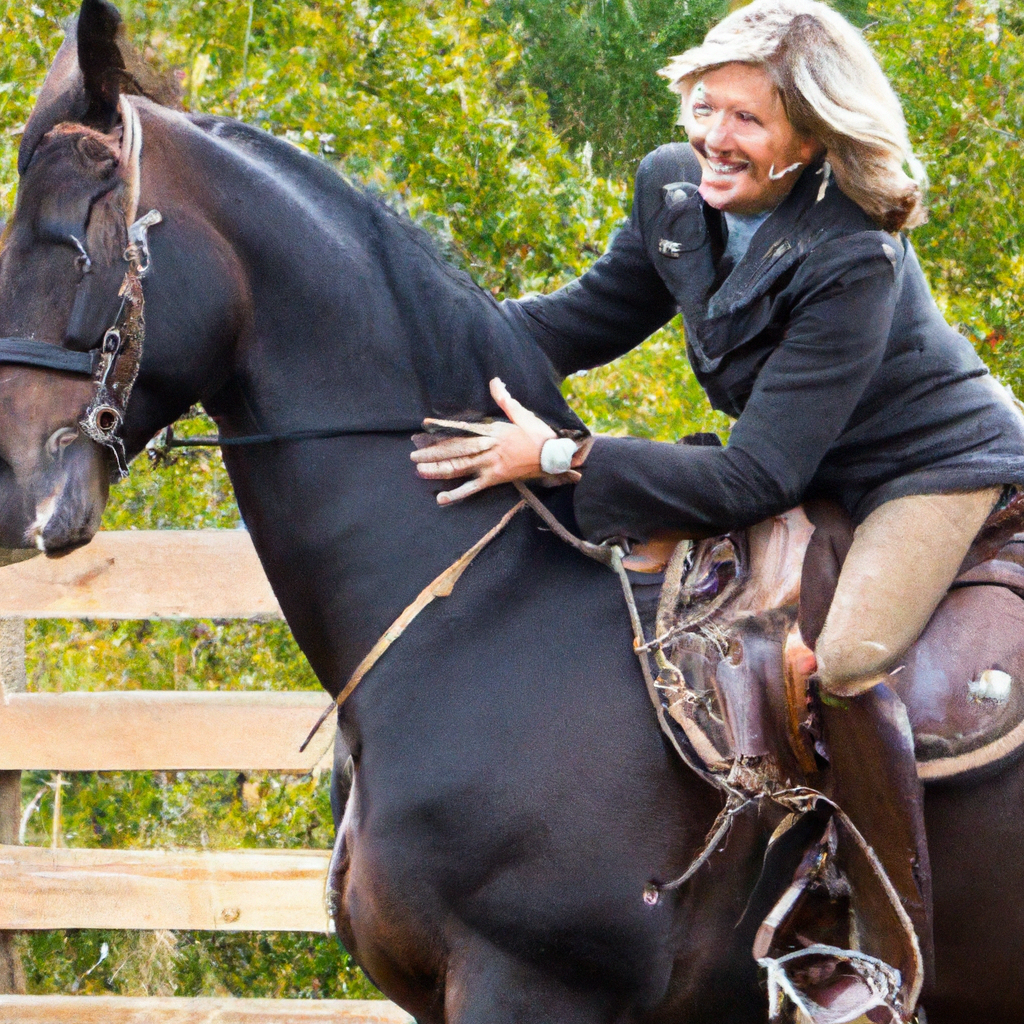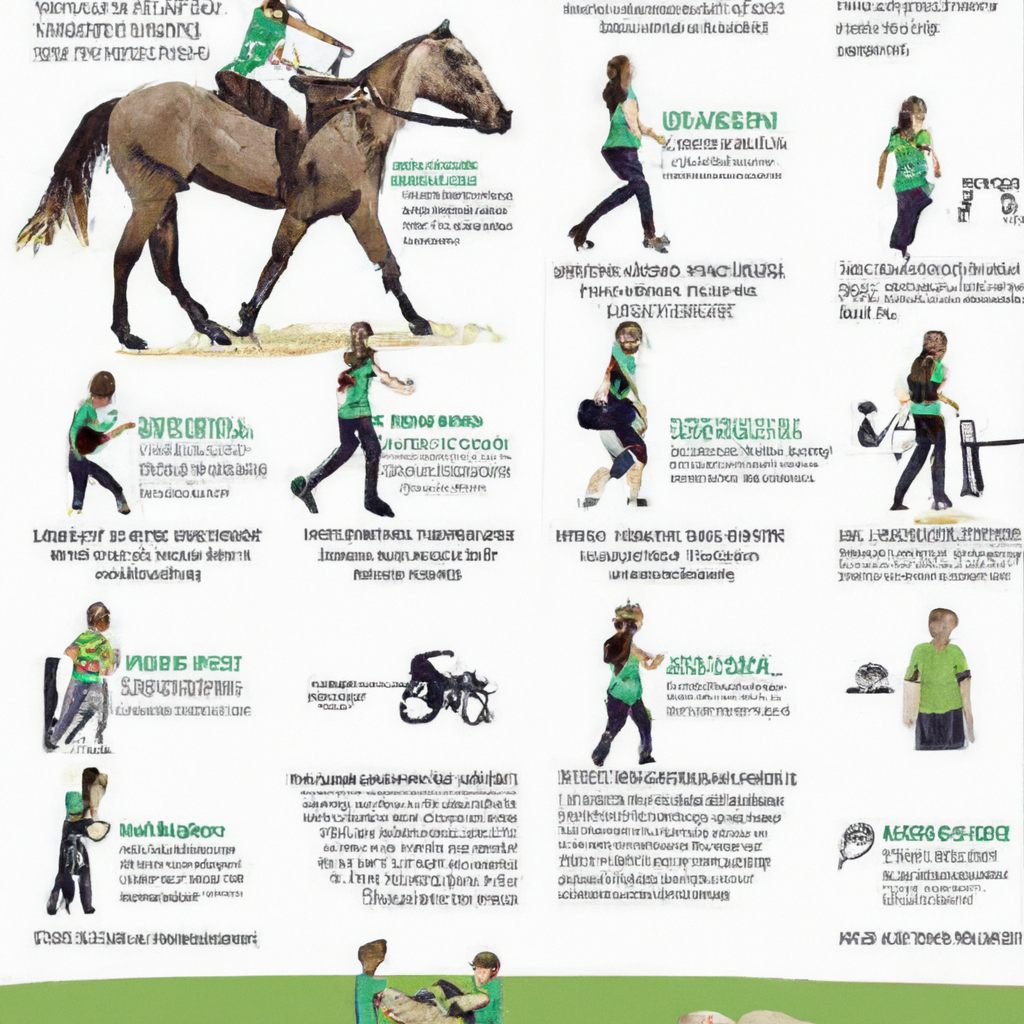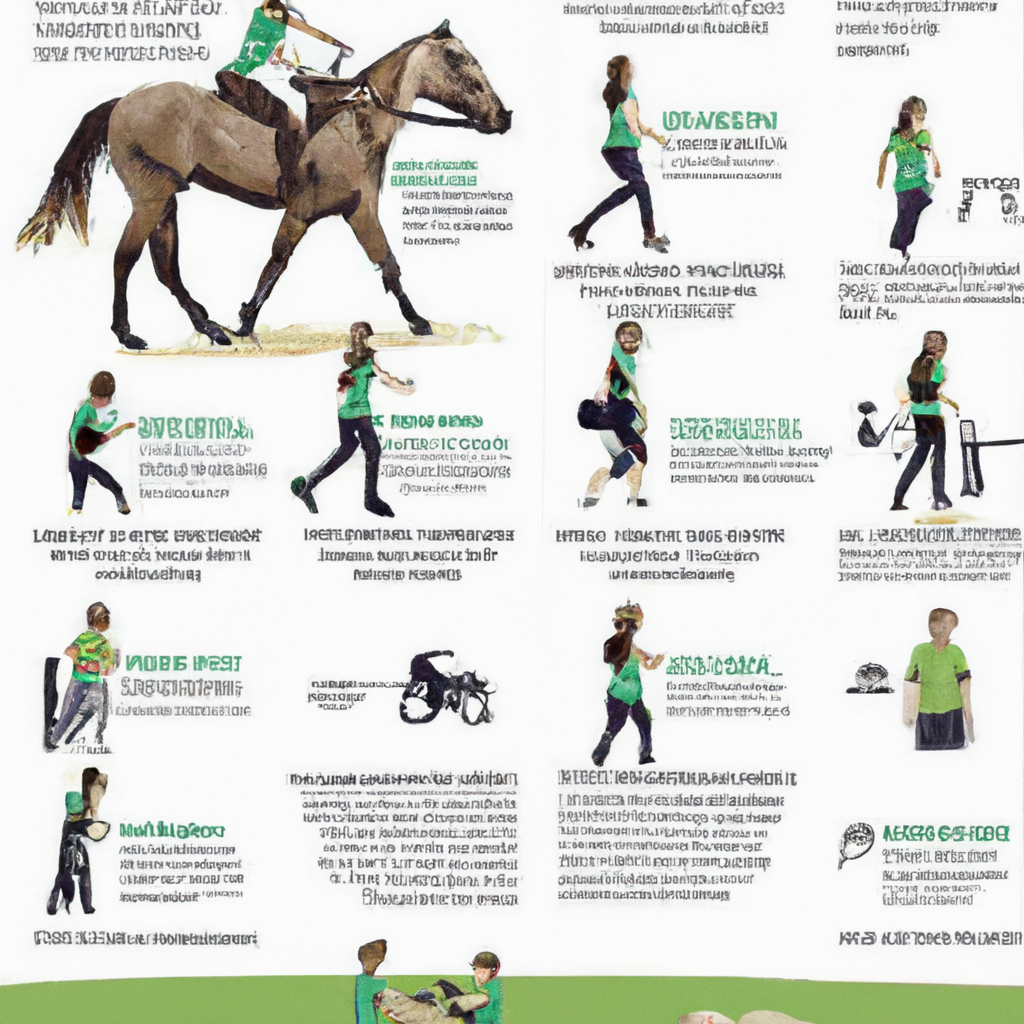Have you ever wondered how horseback riding could help you become a better communicator? Well, in this article, we will explore the fascinating connection between these two seemingly unrelated activities. Whether you’re a seasoned rider or someone who has yet to hop in the saddle, you will discover how horseback riding can enhance your communication skills in ways you never thought possible. So, saddle up and prepare to embark on a journey that will not only deepen your understanding of these majestic creatures but also transform the way you connect and interact with others.
The Connection Between Horseback Riding and Effective Communication
Horseback riding is a thrilling and rewarding activity that goes beyond just riding a horse. It involves a deep level of communication and understanding between the rider and the horse. By honing your communication skills through horseback riding, you can not only become a better rider but also improve your overall ability to connect and communicate with others. In this article, we will explore the basics of horseback riding, the role of communication in this activity, the use of body language and non-verbal cues, as well as tips for enhancing your communication skills on horseback.
Understanding the Basics of Horseback Riding
Introduction to Horseback Riding
Horseback riding is an ancient practice, deeply rooted in our history. It involves riding a horse while maintaining control and balance. The rider sits on the horse’s back and communicates their intentions through various cues and signals.
Horseback Riding Equipment and Gear
Before embarking on your horseback riding journey, it is important to familiarize yourself with the necessary equipment and gear. This includes saddles, bridles, reins, helmets, and appropriate riding attire. Understanding how to properly use and care for the equipment is essential for both your safety and the horse’s well-being.
Mounting and Dismounting Techniques
Mounting and dismounting are fundamental skills that every rider must learn. Proper techniques ensure the safety of both the rider and the horse. Learning how to mount and dismount smoothly and gracefully is essential for a successful riding experience.
Basic Riding Postures and Techniques
Maintaining the correct riding posture is crucial for effective communication with the horse. The rider’s posture, balance, and position influence the horse’s movements and responses. Mastering basic riding techniques, such as rein aids and leg aids, allows the rider to communicate their intentions clearly to the horse.

The Role of Communication in Horseback Riding
The Importance of Communication in Horse-Human Interaction
Communication plays a vital role in horse-human interaction. Horses are incredibly perceptive animals that rely on non-verbal cues and signals to understand their surroundings. Effective communication between the rider and the horse establishes trust, ensures safety, and enables a strong partnership.
Establishing a Connection with the Horse
Building a connection with the horse is the foundation for effective communication. By spending time with the horse on the ground and establishing trust and respect, the rider can establish a bond that carries over into the saddle. Building a connection includes grooming, handling, and understanding the horse’s behavior and body language.
Understanding Horse Communication Cues
Horses communicate through a complex system of body language and cues. Learning to recognize and interpret these cues is essential for effective communication. Paying attention to the horse’s ears, tail, eyes, and overall body posture provides valuable insights into their mood, intentions, and level of comfort.
The Role of Communication in Shaping Horse Behavior
Communication between the rider and the horse plays a crucial role in shaping the horse’s behavior. Through consistent and clear communication, riders can reinforce positive behaviors and correct unwanted habits. By incorporating praise and rewards, riders can motivate horses and foster a cooperative and willing attitude.
Body Language and Non-Verbal Communication
The Power of Body Language in Horseback Riding
Body language is a universal form of communication, and horses are experts at reading human body language. A rider’s posture, movements, and energy significantly impact a horse’s response. Developing an awareness of your own body language and learning to use it effectively can improve your communication with the horse.
Interpreting Horse Body Language
Understanding and interpreting horse body language is essential for effective communication. Horses use their body, facial expressions, and vocalizations to convey their emotions and intentions. By studying and observing their body language, riders can respond appropriately and adjust their own communication accordingly.
Using Body Language to Communicate with Horses
Riders can use their own body language to communicate with horses. Small shifts in weight, subtle movements, and changes in body position can convey commands, cues, and intentions. By refining their own body language, riders can develop a more precise and subtle way of communicating with the horse.
Developing Awareness of Your Own Body Language
Becoming aware of your own body language is a key step in improving communication. By practicing self-awareness and mindfulness, riders can identify any unintentional cues they may be giving to the horse. Consistency in body language and clear intent enhances communication and reduces confusion for the horse.

Building Trust and Establishing Rapport
Building Trust with Your Horse
Trust is the cornerstone of any successful relationship, and the relationship between a rider and a horse is no exception. Building trust involves consistent and fair treatment, clear communication, and meeting the horse’s physical and emotional needs. Trust creates a strong bond and allows for a deeper level of communication and partnership.
Creating a Safe and Secure Environment
A safe and secure environment is crucial in establishing open and effective communication. Horses are sensitive animals, and they need to feel secure in their surroundings. Providing a comfortable and stress-free environment ensures that the horse is receptive to communication and is more likely to trust the rider’s guidance.
Developing a Bond Through Consistency and Respect
Consistency and respect are key elements in developing a strong bond with your horse. Horses thrive on routines and predictability. By being consistent in your interactions, communication, and expectations, you build a foundation of trust and respect. This consistency allows the horse to understand and respond to your cues more effectively.
Earning the Horse’s Trust Through Effective Communication
Earning a horse’s trust through effective communication is a gradual process. By using clear and consistent cues, listening and responding to the horse’s needs, and rewarding positive behavior, you establish yourself as a trustworthy and reliable partner. Trust is earned through mutual understanding and respect, leading to enhanced communication.
Developing Clear and Precise Communication
Using Clear Signals and Commands
Clear signals and commands are essential for effective communication with your horse. The rider must develop a clear understanding of the desired cues and consistently convey them to the horse. Using unambiguous and deliberate signals ensures that the horse comprehends the rider’s intentions.
Developing Consistency in Communication
Consistency is key in communicating with horses. Horses learn through repetition and consistency, so it is crucial for riders to be consistent in using cues and commands. Establishing a routine and maintaining consistency allows the horse to understand expectations and respond accordingly.
Importance of Timing and Clarity
Timing and clarity play a vital role in effective communication. Riders must learn to deliver cues at the appropriate moment to guide the horse’s response. Clear and precise timing enhances the horse’s understanding and minimizes confusion. Clarity in communication avoids mixed signals and helps the horse respond accurately.
Understanding the Horse’s Response to Communication
Understanding how the horse responds to communication is crucial for making adjustments and refining your cues. Horses have different temperaments and learning styles, and riders must be observant and adaptable. By gauging the horse’s response, riders can assess the effectiveness of their communication and make necessary adjustments.
Horseback Riding as a Mirror to Personal Communication Skills
Transferring Communication Skills from Riding to Daily Life
The communication skills developed through horseback riding can be transferred to various aspects of daily life. The ability to listen, observe, and respond effectively carries over into personal and professional relationships. Horseback riding serves as a mirror, reflecting one’s communication style and providing opportunities for growth and improvement.
Improving Confidence and Assertiveness
Horseback riding requires confidence and assertiveness, traits that can be improved through effective communication with the horse. As riders learn to communicate clearly and assert their intentions, they develop confidence in their abilities. This newfound confidence extends beyond the saddle and can positively impact other areas of life.
Enhancing Listening and Observation Skills
Listening and observation skills are essential in both horseback riding and communication. Riders must attentively listen to the horse’s cues and observe their body language to understand their needs and responses. By honing these skills on horseback, riders can become active listeners and keen observers in their daily interactions.
Developing Empathy and Sensitivity
Effective communication requires empathy and sensitivity to the other party’s emotions and needs. Horses are highly sensitive animals, and riders must develop a keen sense of empathy to understand and respond appropriately to their needs. This empathy can then be extended to human interactions, fostering deeper connections and understanding.
Benefits of Effective Communication in Horseback Riding
Enhancing Safety and Control
Effective communication between the rider and the horse enhances safety and control. Clear commands and cues enable the rider to guide the horse’s movements and responses, reducing the risk of accidents or unpredictable behavior. Open communication ensures a harmonious partnership built on trust and understanding.
Deepening the Rider-Horse Connection
Through effective communication, the rider can deepen their connection with the horse. This connection goes beyond mere control and fosters a mutual understanding and respect. By recognizing and responding to the horse’s cues, the rider can develop a profound bond and create a more enjoyable riding experience.
Improving Performance and Partnership
Effective communication positively impacts performance and partnership between the rider and the horse. Clear cues and commands allow for precise movements and proper execution of riding techniques. This improved communication leads to better performance and a more harmonious partnership built on trust and cooperation.
Reducing Frustration and Misunderstandings
Clear and effective communication minimizes frustration and misunderstandings between the rider and the horse. Miscommunication can lead to confusion and resistance, hindering progress and potentially endangering both the rider and the horse. By continually improving communication skills, riders can build a solid foundation of understanding and harmony.
Improving Communication through Riding
Practicing Active Listening on Horseback
Practicing active listening on horseback involves paying close attention to the horse’s cues and cues from other riders or the instructor. By actively listening, riders can better understand their horse’s needs and respond appropriately. This attentive approach improves communication and strengthens the rider’s ability to interpret and act upon the horse’s signals.
Engaging in Clear Dialogue with the Horse
Engaging in clear dialogue with the horse involves effectively using cues and commands to communicate intentions. Riders can engage in a back-and-forth conversation through precise and deliberate signals. This two-way communication fosters trust and ensures a mutually beneficial partnership between the rider and the horse.
Using Intuition and Non-Verbal Cues
Developing intuition and effectively utilizing non-verbal cues is a key aspect of improving communication on horseback. By tuning into the horse’s energy and using subtle non-verbal cues, riders can communicate on a deeper level. Trusting one’s instincts and honing non-verbal communication skills enhances the rider’s ability to connect and understand the horse.
Adapting Communication to Different Horses
Every horse is unique, requiring slight adaptations in communication. Developing the ability to adapt and tailor communication to different horses is essential for successful riding. Riders must observe and understand the specific needs and responses of each horse, adjusting their communication style accordingly.
Challenges in Communication on Horseback
Overcoming Language Barriers with Horses
Horses and humans speak different languages, creating a unique challenge in communication. Riders must find ways to bridge this gap and communicate effectively. Through patience, practice, and a deep understanding of the horse’s behavior and cues, language barriers can be overcome, and a strong partnership can be built.
Addressing Fear and Anxiety in Communication
Fear and anxiety can significantly impact communication on horseback. Both riders and horses can experience these emotions, hindering effective communication. Riders must address their own fears and anxieties through self-confidence and relaxation techniques. Creating a calm and secure environment for the horse also helps alleviate their potential fears.
Navigating Communication Issues in Group Rides
Communication issues can arise in group rides where multiple riders and horses are present. Riders must navigate and adapt their communication to accommodate the dynamics of the group. Clear signals and maintaining awareness of other riders’ movements are crucial in avoiding confusion and ensuring a safe riding experience for all.
Dealing with Ineffective Communication on Horseback
Ineffective communication can lead to frustration and misunderstandings between the rider and the horse. Riders must be proactive in identifying and addressing communication issues. Seeking guidance from instructors or professionals can provide valuable insights and help improve communication skills. By actively working towards better communication, riders can overcome obstacles and strengthen their bond with their horse.
Tips for Enhancing Communication Skills on Horseback
Building a Strong Foundation of Trust and Respect
Trust and respect are the cornerstones of effective communication on horseback. Taking the time to build a strong foundation with your horse through consistent handling, fair treatment, and clear communication is essential. This foundation fosters trust and respect, allowing for a deeper connection and enhanced communication.
Practicing Patience and Consistency
Patience and consistency are key elements in improving communication skills. Horses learn through repetition and consistency, so riders must be patient in their approach. Consistently practicing clear cues and commands helps horses understand and respond appropriately, reinforcing effective communication.
Seeking Professional Guidance and Instruction
Seeking professional guidance and instruction is invaluable in enhancing communication skills on horseback. Professional trainers possess the expertise and experience to assess and provide guidance tailored to individual needs. Working closely with a knowledgeable instructor can help riders refine their communication techniques and overcome challenges.
Continuously Improving Communication through Practice
Improving communication skills on horseback is a continuous process. Regular practice allows riders to refine their cues, commands, and body language. Consistently seeking opportunities to ride and learn from interactions with different horses helps riders develop a deeper understanding and fluency in their communication.
In conclusion, horseback riding offers a unique opportunity to improve your communication skills. By understanding the basics of horseback riding and establishing a strong connection with the horse, you can develop clear and precise communication through body language and non-verbal cues. Building trust and rapport, along with consistent and respectful communication, enhances the rider-horse partnership. Effective communication in horseback riding translates to improved confidence, empathy, and listening skills that can be applied in daily life. The benefits of effective communication on horseback extend to safety, performance, and deepening the connection between rider and horse. By continuously working on improving communication skills and overcoming challenges, riders can enjoy a fulfilling and harmonious riding experience.
